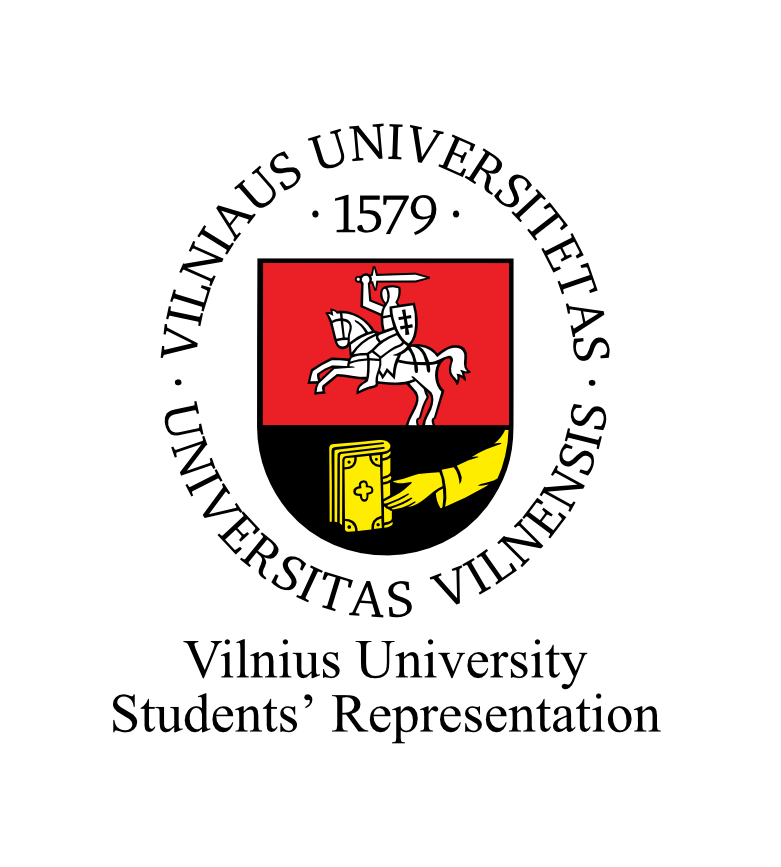Process renewal
Integration process
From 2024 to 2025, significant changes to the integration process have been implemented to ensure better preparation and smoother integration of new student(s) into the university community.
Advanced processes:
The selection of curators started earlier than in previous years, which allowed the establishment of a team building phase. This phase is designed to strengthen peer-to-peer collaboration and preparation before the start of active mentoring. The central training of curators has also been brought forward, which provides better opportunities to train curators in the units. The membership test is still compulsory, but from now on, curator(s) will have to pass it before they start their active work.
Integration of international students:
A plan for integrating international students has been introduced to involve this group of students in a more targeted and systematic way. During this plan, it was noted that the curators who act as mentors require additional competencies. A decision was made to separate the two positions, making the curator and the mentor different positions with different training needs.
Mentoring for Doctoral students:
The process of mentoring doctoral students has also been started. This is a new step to ensure that PhD students have access to help, guidance and community support from the start of their studies.
Planning process
To make the planning process of VU SR smoother and after recognising that not all members of the Organisation have the same knowledge of the process within VU SR, a decision was made to review the planning process again and to renew certain parts of the process to achieve a more efficient and clearer implementation of the planning process and the set objectives. Throughout updating the planning process, interviews were conducted with the VU SR alumni, the VU SR U Chairpersons, the Institutional Strengthening Fund and the VU SR Central Office. A working session was also implemented in December, during which the main solutions were identified to make the planning and implementation of VU SR activities smoother.
The whole planning process of VU SR consists of four parts: preparation for planning activities, implementation of planning activities, implementation of the created plan and monitoring process. During the update, all the latter parts of the process were reviewed from the beginning and updated according to the needs expressed by the members. The main changes were:
- Each year, the VU SR U teams had to clarify the issues in their unit only after the change of the term of office, and this was done by the new team, which in many cases could lack context. To ensure the quality and timeliness of the problem identification process, it was decided that the VU SR U teams should identify their problems and describe the existing ones in more detail during March.
- The VU SR summer and VU SR U autumn training will have to include activities focused on the relevance of VU SR planning or will have to be related to the exploration and presentation of VU SR U problem areas.
- For each VU SR P to plan correctly and to be able to see the overall plan of its annual activities, the following documents will be mandatory for each team to fill in during the VU SR U planning sessions: the goal implementation plan, the activity plan for the academic year, the grid of activities for the academic year.
- Updated VU SR Goal Implementation Plan template.
- The VU SR U teams' expectations for the moderators, the assignment of moderators and the registration for the VU SR U planning are scheduled to occur earlier than usual.
- A VU SR Planning Guide has been created, which provides a precise and clear description of the most common types of planning in VU SR: VU SR and VU SR U planning, annual activity planning, VU SR PCP planning and area planning. The latter types of planning have been described based on the current processes of the VU SR and with clear guidance on how each of these processes is carried out and how to prepare for it.
Map of competences
Participation in training to provide and improve competencies necessary for the member's activity is a duty of Vilnius University Student Representative body members as stated in the Statutes of the Organisation, and consistency of competencies improvement is a strategic project provided for in the VU SR 2022-2025 Strategic Action Plan. To fulfil this duty as provided in the Statutes and as a priority in the Strategic Plan, a competency map for VU SR members has been developed for the period 2024-2025 - a concept to ensure:
A strategic approach to the improvement of the competencies of VU SR members;
The concept of the VU SR Membership Pathway defines that all members have equal opportunities to challenge themselves in the various activities of the Organisation and their implementation by learning about themselves, discovering new interests, striving for development and lifelong learning;
The personal growth of each member is enabled by regular (self-)reflection and timely mutual feedback.
At the same time, it will be aimed that these principles become the basis for the transformation of the internal culture of VU SR, ensuring the expertise of the Organisation and the possibility for students who join VU SR units, programmes, clubs, projects, other initiatives, structures, work or self-expression groups to realise their self-fulfilment and development.
Emergence of SIC
The first year has been a busy and successful one. On 21 November, the SIC organised a student(s) science fair featuring presentations by the Student Naturalists' Scientific Society (SGMD), the Student Scientific Society (SSS) of the Institute of International Relations and Political Science (IIRPS), (Un)discovered Asia, the Student Scientific Society (SSS) of the Faculty of Communication, The COINS, the Student Scientific Society (SSS) of the Faculty of History and the psychology student society VUpsi. At the event, participants got to know the science-themed self-expression initiatives at Vilnius University, ask questions and learn more about their activities.
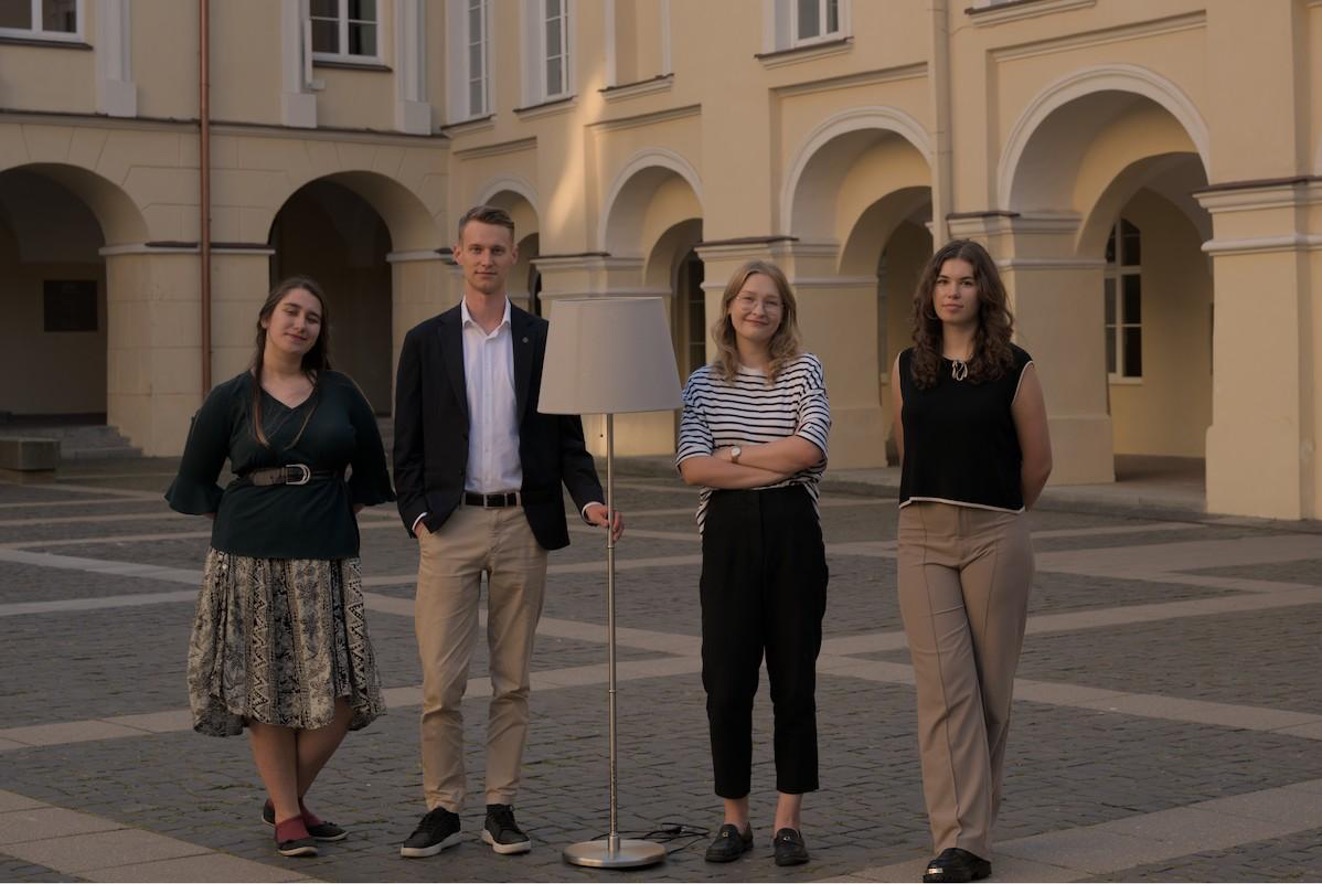
The Science Fair marked the start of the Student Science Initiative Network, with 2 meetings of the SSS leaders after the fair to discuss the importance of mutual collaboration and interdisciplinarity and to develop new project ideas.
The SIC also focused on strengthening the university community in Kaunas and Šiauliai. On the 11th of February, the SIC team organised an initiative day at the VU Šiauliai Academy and on the 25th of March at the VU Kaunas Faculty. Student initiatives of VU SR were presented to the students studying at these VU units. The participants had the opportunity not only to ask questions to the representatives of the already existing student initiatives but also to learn from the VU SR Student Initiative Centre members how they could establish an initiative in their own community.
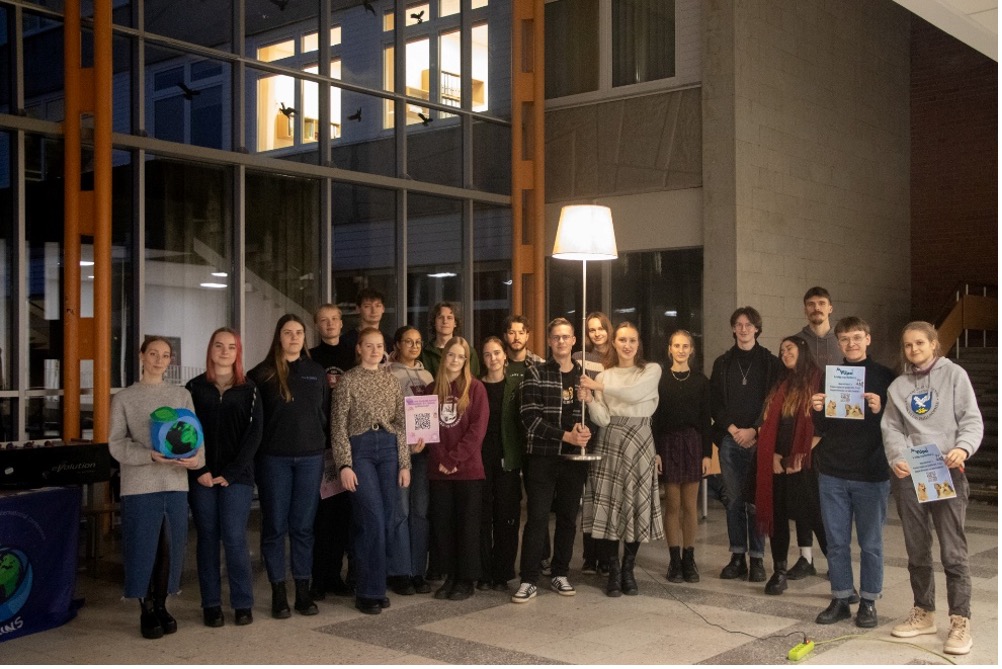
On the 21st of February, the SIC organised Hack'VU 25 - a hackathon of student initiatives. During the Hackathon, the participants and the activity moderator, Klaudijus Melys, worked on the ideas of their initiatives and tried to solve practical issues. Afterwards, they had the opportunity to seek help from mentors, who shared their experience and knowledge and helped them develop plans to implement their ideas. The event focused on creating a basketball club, a living Latin club, an astronomy club, and initiatives to integrate international students from different university units. The main prize of the Hackathon - €500 funding for implementing the initiative's activities - was won by the VU Astronomy Club from the Faculty of Physics.
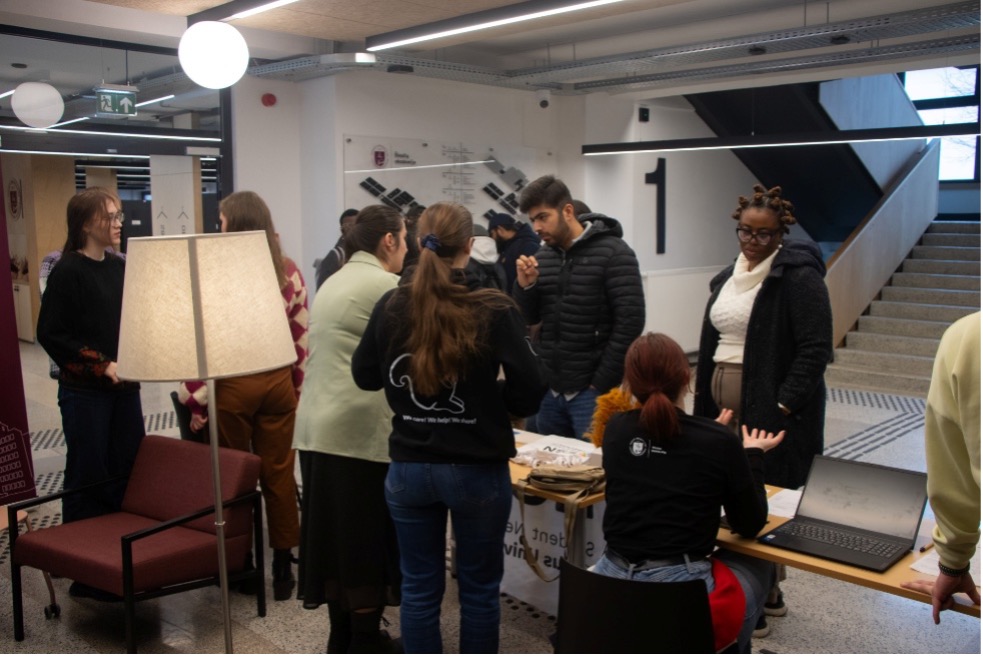
In total, the SIC has helped to establish five new communities during the term: the Crochet Club, the Writers' Club, the Astronomers' Club, the Aurora Basket Basketball Club, and the Otium Palæmonis Living Latin Club, as well as organising the activities of the VU Photo Club. These new initiatives brought together many active students from different faculties. To ensure the continuity of these student initiatives and to create favourable conditions for the future creation of new ones, the SIC prepared a description of the funding of VU SR student initiatives, which the VU SR Parliament approved.
The SIC ends its first year of operation with a strong commitment to pass on the experience gained to the new team and to ensure that the VU SR Student Initiatives community continues to grow.
Brandbook
As the current context and expectations of brand-images have changed, the expectations for our brand-identity has been likewise changing for some time. Meanwhile, the brand-book of our Organisation has remained unchanged for 10 years and the logo for 30 years. We committed ourselves to updating the visual identity of the Organisation, taking into account modern trends and responding to the need to reflect the image of a trustworthy NGO partner as well as an attractive university student community, while at the same time tackling the many communicational challenges that we have had in practice. During the 2024--2025 term, a lengthy process of updating the organisation's visual identity was undertaken.
Dialogue and feedback
The year started with extensive context gathering. Through individual and joint meetings with Coordinators, Members, Alumni, external graphic design students and other relevant persons, feedback was gathered on every aspect of the Organisation's image and visual identity. The feedback fundamentally changed the vision of the brandbook more than once. Taking everything into account, the draft visual identity was formally presented and discussed in the period of December-April with the Central Office, Council, Communication coordinators, in individual meetings with VU SA units and alumni. After having had all the above mentioned discussions and appropriate adjustments, the brandbook and visual identity have been changed drastically and are being adopted with almost unanimous agreement within the organisation.
Logo and coat of arms
Following the decision to modernise the logo but keep its format as a coat of arms emblem in the logo, we consulted alumni and representatives of the VU Faculty of History, who recommended us to create a new but associative and meaningful design for the coat of arms for the Representation, based on heraldic traditions and norms. After considerations within the organisation of what symbols are meaningful to us -- the suggestions were unanimous. The updated VU SA logo and the coat of arms embedded in it depicts 3 symbols, from top to bottom: stars, a student cap and a student's hand with a book.
